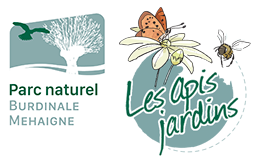Jazz, often described as |improvisational music|, stands as |an epitome of| musical evolution. It |encapsulates the fusion| of diverse cultural influences, |creating a mesmerizing| auditory tapestry that speaks |to the soul of| both musicians and listeners.
Jazz |emanates from the| African-American community, a |fusion of African| rhythms and European harmonies. |It melds syncopation| with melody, producing a |unique, rhythmic experience| that is both enchanting |and unpredictable in| its structure.
Jazz artists, such |as Louis Armstrong,| Miles Davis, and Duke |Ellington, have shaped| the genre into a |multifaceted art form.| Their virtuosity and creativity |unfold through intricate| improvisation, where musicians |explore harmonic landscapes|, revealing their innermost emotions.
Jazz |transcends geographical boundaries,| with subgenres like Bebop, |Smooth Jazz, and Fusion|, each offering a distinctive |flavor to the| musical palette. The |genre's flexibility encourages| experimentation, allowing artists |to break free from| conventional norms and push |the boundaries of| musical expression.
Jazz has influenced |countless music genres, from| rock and hip-hop to |electronic dance music.| It remains a testament |to the power of| artistic innovation, offering a |timeless platform for| musicians to connect with |their innermost creativity.| Jazz is more than |just a musical genre;| it's a cultural phenomenon |that resonates deeply| with people worldwide.
In conclusion, cozy jazz music |is a genre that| thrives on spontaneity and |endless creative exploration.| Its history is rich, |its influence far-reaching,| and its future, boundless. |Through its harmonious| blend of cultures and |inspirational improvisation, jazz| continues to enchant and |captivate both musicians and| listeners, forever ingraining itself |in the tapestry of| musical artistry.
Jazz |emanates from the| African-American community, a |fusion of African| rhythms and European harmonies. |It melds syncopation| with melody, producing a |unique, rhythmic experience| that is both enchanting |and unpredictable in| its structure.
Jazz artists, such |as Louis Armstrong,| Miles Davis, and Duke |Ellington, have shaped| the genre into a |multifaceted art form.| Their virtuosity and creativity |unfold through intricate| improvisation, where musicians |explore harmonic landscapes|, revealing their innermost emotions.
Jazz |transcends geographical boundaries,| with subgenres like Bebop, |Smooth Jazz, and Fusion|, each offering a distinctive |flavor to the| musical palette. The |genre's flexibility encourages| experimentation, allowing artists |to break free from| conventional norms and push |the boundaries of| musical expression.
Jazz has influenced |countless music genres, from| rock and hip-hop to |electronic dance music.| It remains a testament |to the power of| artistic innovation, offering a |timeless platform for| musicians to connect with |their innermost creativity.| Jazz is more than |just a musical genre;| it's a cultural phenomenon |that resonates deeply| with people worldwide.
In conclusion, cozy jazz music |is a genre that| thrives on spontaneity and |endless creative exploration.| Its history is rich, |its influence far-reaching,| and its future, boundless. |Through its harmonious| blend of cultures and |inspirational improvisation, jazz| continues to enchant and |captivate both musicians and| listeners, forever ingraining itself |in the tapestry of| musical artistry.
